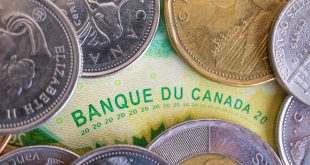Saudi Arabia’s abrupt pivot from propping up oil prices to embracing lower prices hints at a bold strategy to reclaim market share, even at the cost of fiscal strain. With Brent crude plunging below $65 per barrel, the kingdom’s signals of tolerating prolonged low prices suggest a potential price war reminiscent of 2014 and 2020. This move, driven by frustration with OPEC+ quota violators and non-OPEC supply growth, demands a delicate balance to fund Vision 2030 while challenging global producers.
A New Saudi Stance on Oil Prices
Saudi officials have briefed allies that the kingdom can endure low oil prices by increasing borrowing and cutting costs, according to Reuters. This marks a departure from five years of OPEC+ output cuts, led by Saudi Arabia and Russia, which aimed to stabilize prices. The International Monetary Fund estimates Riyadh needs Brent at $90 per barrel to balance its budget, yet prices have slid to four-year lows, driven by OPEC+’s surprise May output hike of 411,000 barrels per day and fears of a trade war curbing demand. Saudi Aramco’s sharp price cuts for Asian buyers, slashing Arab Light crude by $2.30 to a $1.20 premium over Oman/Dubai benchmarks, underscore this shift toward competitiveness.
Strategic Motives and Market Dynamics
The kingdom’s strategy appears twofold: punish OPEC+ members like Kazakhstan and Iraq for exceeding quotas and counter non-OPEC producers like the US, whose shale output has eroded OPEC+’s market share to 48%. By boosting production, Saudi Arabia aims to squeeze high-cost producers, echoing the 2014 price war that targeted US shale. However, today’s context differs—global supply chains are strained, and US tariffs under President Donald Trump, who favors low gasoline prices, add volatility. Saudi Arabia’s low production costs give it leverage, but a prolonged price war risks swelling its budget deficit, projected to hit $75 billion in 2025 if Brent averages $62, per Goldman Sachs.
Fiscal Challenges and Vision 2030
Saudi Arabia’s Vision 2030, aiming to diversify from oil via projects like NEOM, faces headwinds. Oil accounts for 61% of government revenue, and a 30% cut in Aramco dividends will reduce funds by $38 billion in 2025. The kingdom plans to borrow $37 billion to cover a $27 billion deficit, with public debt expected to rise to 29.9% of GDP. Delaying or scaling back mega-projects is likely, as officials signal readiness to adjust spending. Yet, Saudi Arabia’s $500 billion in foreign reserves and low debt-to-GDP ratio provide a buffer, unlike smaller producers like Oman or Bahrain.
The kingdom must tread carefully. A sustained price war could destabilize allies like Russia, whose budget balances at $70 per barrel, and strain smaller OPEC+ members. Trump’s upcoming visit, potentially offering arms and nuclear deals, may align with Saudi Arabia’s output boost to lower US fuel costs. Riyadh’s challenge is to reclaim market share without derailing its economic transformation. Policymakers, led by Energy Minister Abdulaziz bin Salman, should prioritize strategic discipline, leveraging financial reserves to outlast competitors while ensuring fiscal prudence to safeguard long-term goals.

 Noor Trends News, Technical Analysis, Educational Tools and Recommendations
Noor Trends News, Technical Analysis, Educational Tools and Recommendations




